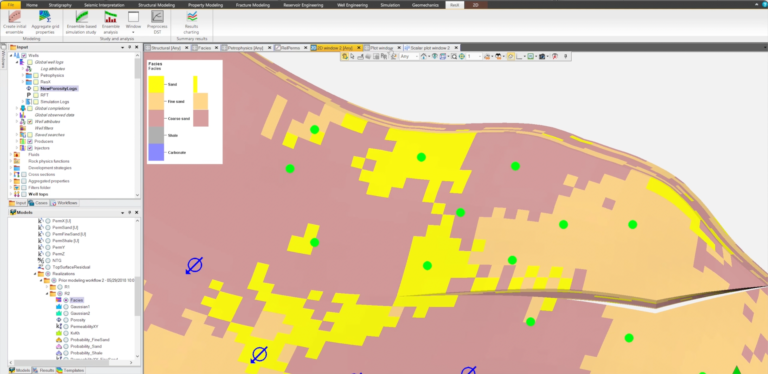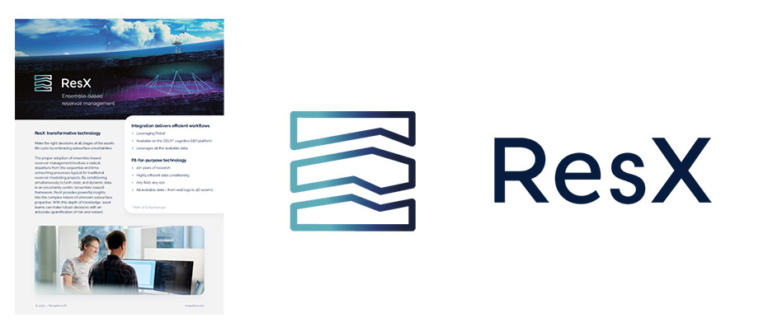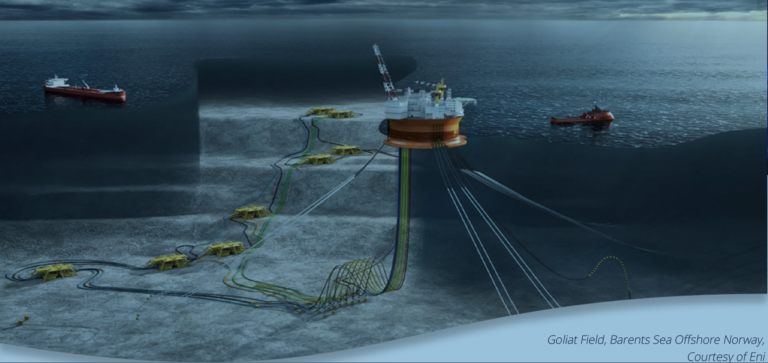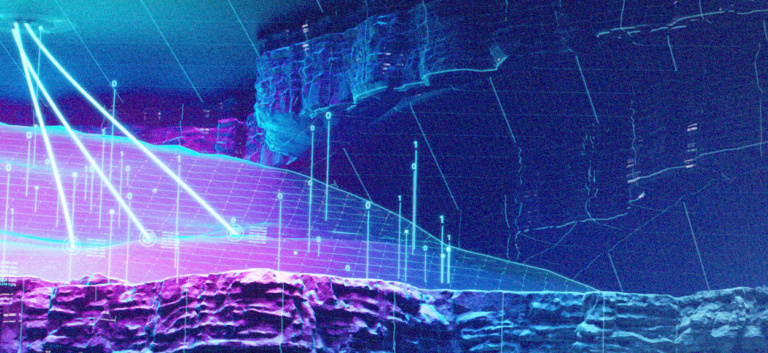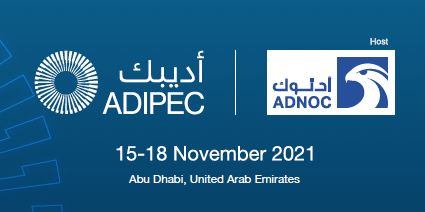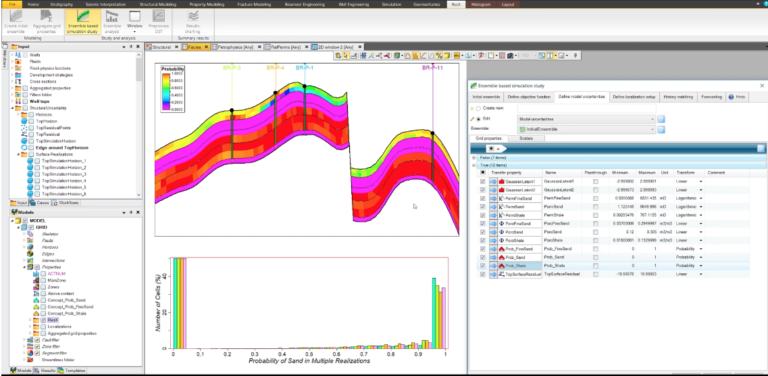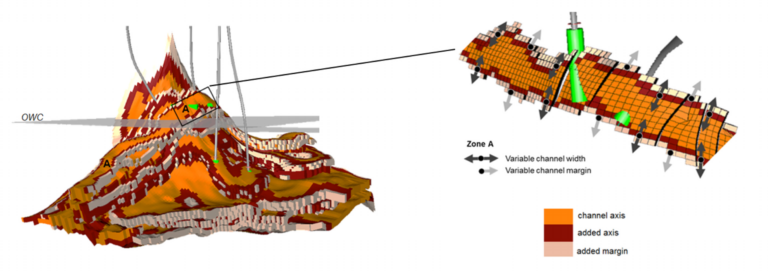Overview
ResX is the software that makes truly integrated reservoir modeling possible. Ultimately, integrated modeling is not just about a better management of the interfaces between disciplines or having a single platform where all disciplines can work. Integrated modeling is a modeling paradigm where all data that informs the subsurface understanding can be integrated in a consistent workflow, so that models are a reasonable representation using data from all subsurface disciplines.
ResX allows subsurface teams to embrace uncertainties in the reservoir modeling and history matching process. ResX is built from the ground up on ensemble-based methods, where the full range of geologically consistent reservoir models are history matched and used as a basis for production forecasts. By continuous data conditioning of static and dynamic data, ResX dramatically increases your team’s efficiency, freeing up time to explore better options for reservoir management or to perform more analysis to learn about your reservoir.
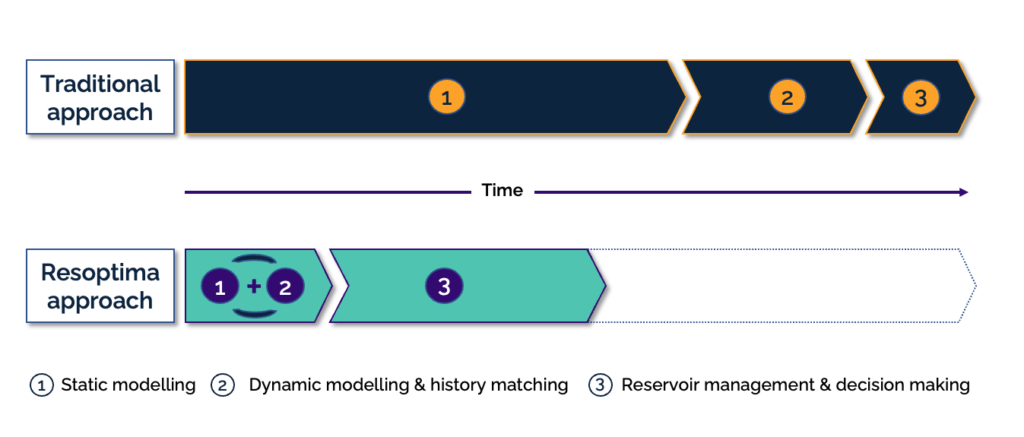
ResX saves time while delivering better insights. When new data becomes available, updates to the models are even faster, making it easy to keep the model up to date with the latest information.
The ResX workflow
Create initial ensemble
Key to successful application of ResX is to have an initial ensemble of models that capture key model uncertainties and that are plausible given both measured static and dynamic data.
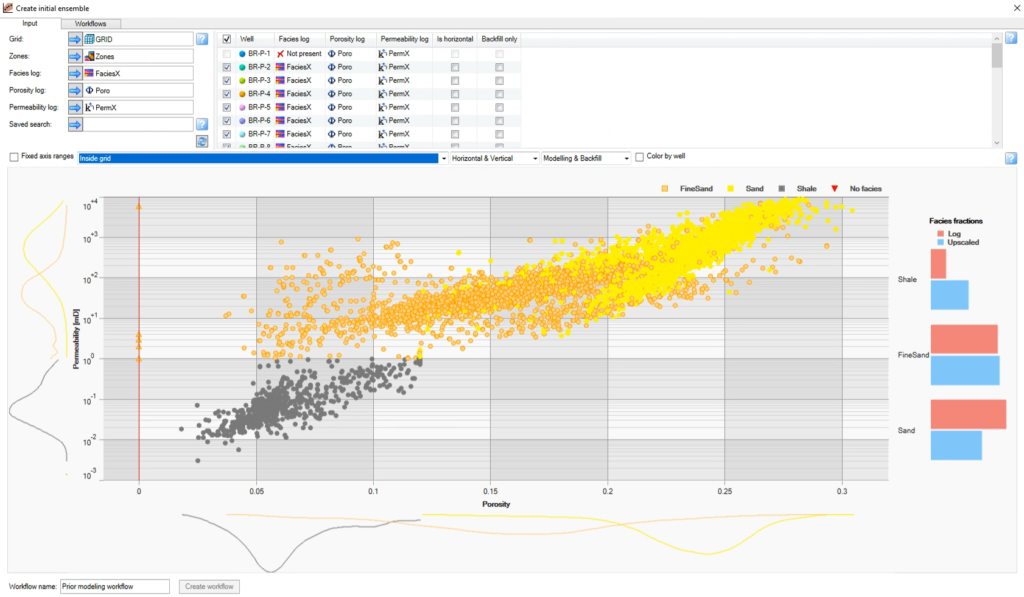
Create ensemble
With ensemble-based modeling it is wise to spend time creating a robust initial ensemble. The Create Initial Ensemble process in ResX, together with automated workflows, greatly speeds up the process of generating a prior collection of models to be history matched in an ensemble study.
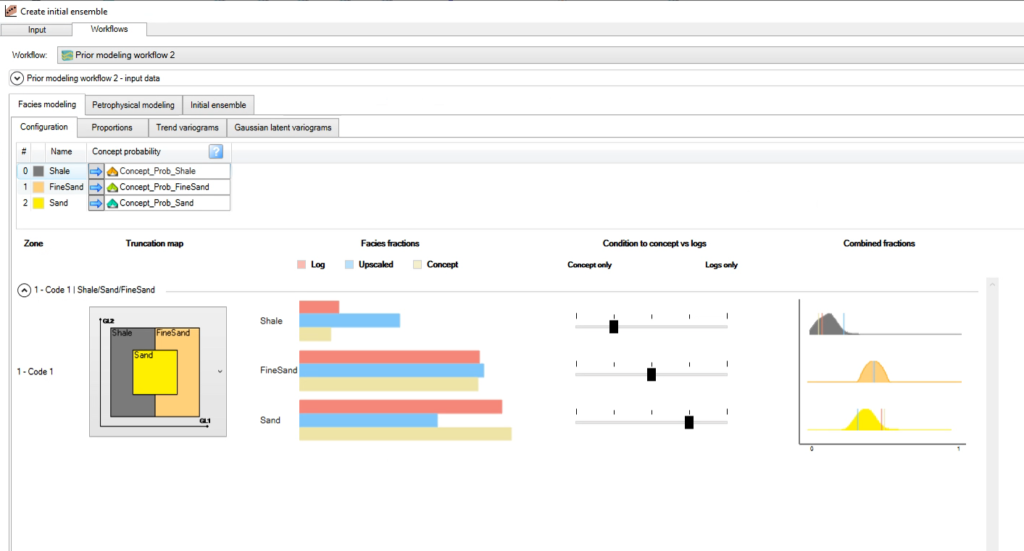
Adaptive pluri-Gaussian (APG) facies modeling
The APG facies method within the Create Initial Ensemble process offers an elegant way to consistently integrate both static and dynamic data. This, while ensuring geological consistency. When running an ensemble study each facies realization is conditioned to the dynamic data by updating the inputs to the facies modeling algorithm, which ensures consistent and geologically reasonable history matched modes
Ensemble-based study
Choose which initial ensemble to use, set up the objective function, specify model uncertainties and localization setup and run your history matching study and production forecast. ResX works equally well on small fields with a limited number of data measurements, as for truly giant fields with decades of production data. ResX scales by taking a geostatistical approach to modeling, combining ensemble Kalman principles with an iterative smoother.

Objective function
The objective function in ResX supports well production data, RFT & PLT logs, DST data as well as 4D seismic data.
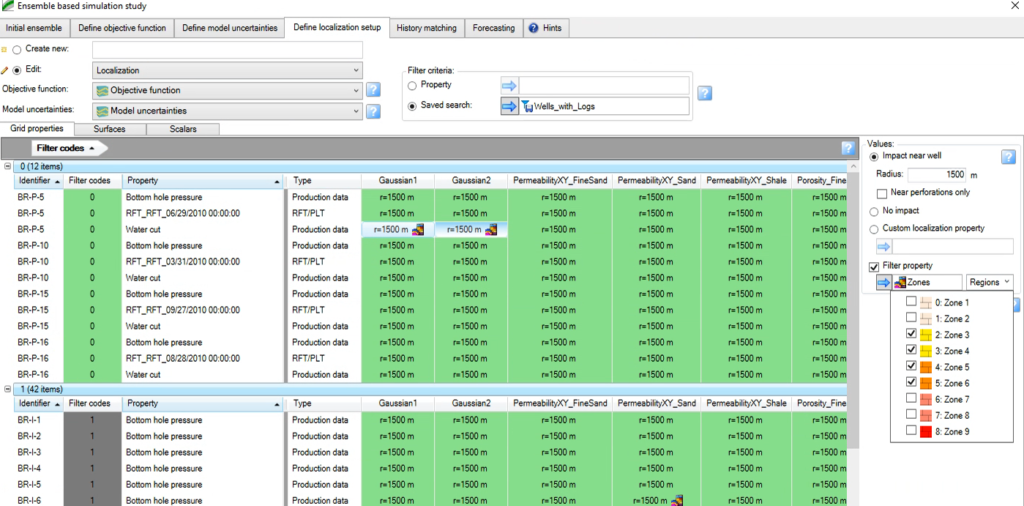
Localization
An important step in your ensemble study is to define your localization setup. It tells ResX which areas it can update when conditioning to dynamic data. Specify a radius, a custom localization property or leave it to ResX to do auto localization.

Monitoring & run management
ResX comes bundled with a dedicated simulation manager which submits and monitors your simulations. With ResX you can resume studies that have stopped or create a new study from any previous iteration.
Ensemble analysis
The main goal of an ensemble-based study is to gain new insights to the reservoir. Hence, one should always evaluate the statistical attributes of properties and scalars of all the models making up the ensemble, and compare these to the statistics of the initial ensemble. ResX offers a set of tools to let you analyze and understand the initial ensemble and the resulting conditioned ensemble after an ensemble study has been run. Furthermore, IRMA automatically ingests and manages your ensemble data, giving you the full benefits of the aggregated statistics of the ensemble and provides you with specific ensemble-oriented analytics.
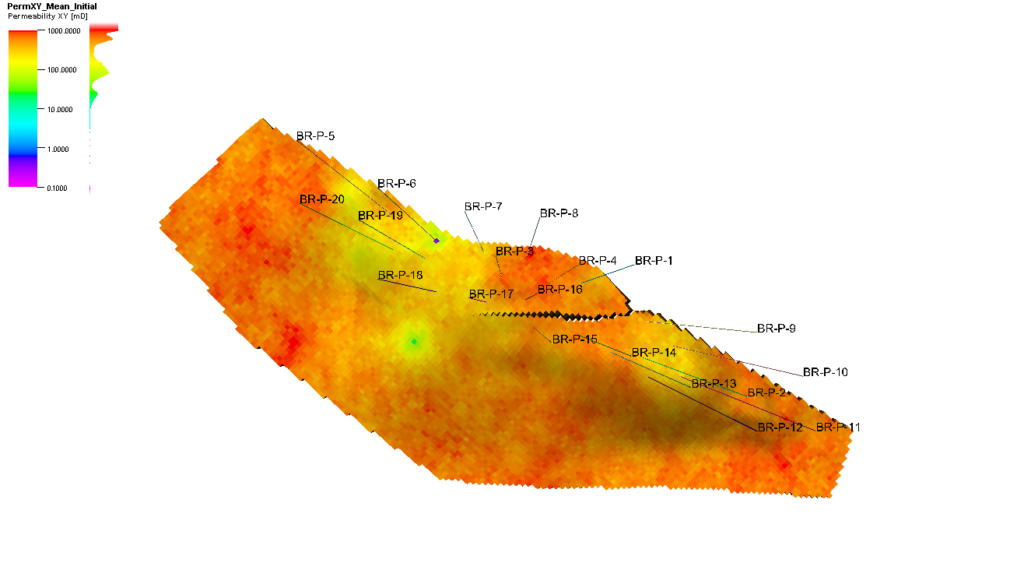
Initial ensemble analysis
The Aggregated grid properties process in ResX let you evaluate the statistical properties of the initial ensemble for all model properties and scalars. This, to ensure that the values of the prior distribution are according to model assumptions. Use the Ensemble analysis process to QC your objective function and check that you span and capture key trends for all wells.

Insights from a conditioned ensemble
Extracting insights from a conditioned ensemble begins with understanding what ResX has updated and where in the models these updates occur. This provides valuable geological and engineering understanding to the subsurface team and helps them to conceive new ideas of how to improve not only their modeling workflows but more importantly also the field development.
The conditioned ensemble is the vehicle for testing these ideas: such as where to drill, how many wells, and optimal well controls. ResX and IRMA deliver an uncertainty-centric approach based on an end-to-end integrated and automated workflow that quickly closes the loop between input data and output ensemble, providing insights and decision support.
Forecasting with ResX
The main driver for building an ensemble of models is to use the ensemble to make many important field development decisions during the lifetime of an asset. Generating forecasts with ResX gives an improved estimation of the spread of key reservoir performance indicators and can help companies take better decisions with an understanding of the risks involved. ResX offers tools to let you run these forecasts and there is also tight integration with IRMA where much more is offered with regards to well planning and optimization of the asset.
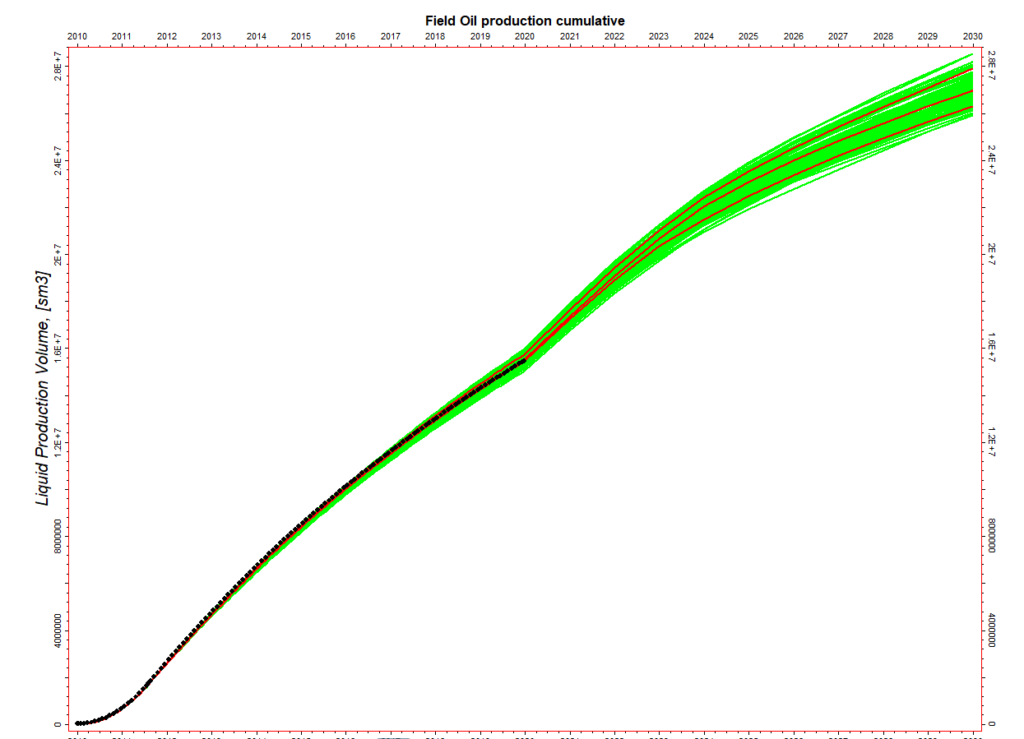
Forecasting
ResX comes with the ability to directly launch your entire ensemble in a forecast mode. This saves valuable time and effort when setting up and comparing multiple scenarios for the future of your field.
Integration with IRMA
IRMA automatically ingests and manages ensemble data from ResX.
ResX and IRMA deliver speed, control and power to look at all available data as a whole. Immediately assessing how modeling choices and data interpretation affect the resulting ensembles of models and enabling teams to quickly iterate and continuously learn and improve.
ResX and IRMA deliver an uncertainty-centric approach based on an end-to-end integrated and automated workflow that effectively connects the input data to ensemble, providing analytics for insights and decision support.

New developments
ResX is developed using the latest DevOps agile methods, resulting in new versions being made available at regular intervals. To find out what salient improvements were released in the past year, you can open the development page here.
FAQs
-
Is ResX compatible with DELFI?Yes, there is a version of ResX compatible with DELFI 2020, DELFI 2021 and DELFI 2022
-
Do the uncertain variables need to have a Gaussian distribution?No! It is a common misconception that ensemble Kalman approaches require Gaussian prior distributions for them to work.
-
Does Resoptima offer ResX training courses?Yes, we have a number of training solutions adapted to the users’ experience, as well as bespoke programs
-
Is there a limit to the number of grid cells ResX can handle?Theoretically, there is no particular limit to the number of grid cells ResX can handle.
-
Is ResX compatible with Petrel?ResX is built as a module on top of Petrel. We support Petrel 2019, Petrel 2020, Petrel 2021 and Petrel 2022


